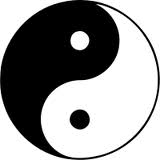Carl Jung > Archetypes
What Are the Archetypes According to Jung The archetype is an innate psychic tendency which molds and transform the individual ego/consciousness. rather a natural tendency to
shape things than a collection of inherited contents such as images, ideas, concepts; it is a matrix which influences human thinking and
believes on the ethical, moral, religious and cultural levels. Jung talks about the archetype (also called "primordial image") as of the biologists' patterns of behavior
(inborn behavior patterns). In short, archetypes are inborn tendencies which shape the human behavior. "The archetype concept - Jung writes - derives from the often
repeated observation that myths and universal literature stories contain well defined themes which appear every time and everywhere. We often meet these themes in the fantasies, dreams,
delirious ideas and illusions of persons living nowadays". These themes are representatives of archetypes; they are based on archetypes. They impress, influence and fascinate us (our ego).
This is why we call their tremendous effect numinous - that is, able to arise deep and intense emotions. Archetypes do not have a well defined shape "but from the
moment they become conscious, namely nurtured with the stuff of conscious experience." Basically an archetype is empty, purely formal, nothing else but a pre-shaping possibility or an innate
tendency of shaping things. We can say that archetypes resemble the instincts in that that they cannot be recognized as such until they manifest in intention or action.
Archetypes are both negative and positive, that is they have two sides. One may figure out the archetype dualism by comparison with the symbolism of the well-known yin-yang principle. Though
Yin and Yang are parts of the same unity - the T'ai chi t'u - they have separate and opposite meanings: decline and progress, below and high, night and day and so forth.
Finally, the archetype is psychoid (psychic-like). The archetypes concept has been approached by Jung in his entire work after he left Sigmund Freud. But in his book on the confrontation between the ego and the unconscious*, when he describes the process of assimilation of the unconscious, he writes mostly about archetypes such as: Persona, Shadow, Anima / Animus, the Self and the Mana personality. How archetypes appear in dreams Archetypes in dreams usually appear in people who have taken at least one step in the individuation process.
Below we give a list of archetypal images that appear in dreams. The list is certainly not complete. Archetypal images appear in various symbolic forms. For example:
triangles, squares, circles can be archetypal images. The numbers 4, 3, 2, or 1 can be archetypal images. Their meaning connects to phases of individuation process.
Images such as mountains, sea, plain, sky, sun-moon, mountain caves, rivers can be archetypal images. Squares, gatherings of people, hats that cover or not the head. Human heads. Phallic objects.
Among people, archetypes are always collective characters: presidents of the country, famous actors, famous athletes, priests, teachers, doctors. An unknown doctor, but for whom the dreamer had great respect,
appears to advise him on which path to take. He follows the advice and reach a new completely new experience in his endeavor. Unknown holy women for whom we have great respect in dreams
and who tell us unforgettable, precious things. Old people, people dressed in white, dwarfs, disabled people. Let's remember that the appearance of the archetype always
produces strong emotions of respect, awe, or/and fear, terror. Archetypes in dreams are always interpreted through amplification. The archetype of individuation
There is an archetype of the individuation process. That is, a general, universal scheme, transmitted through the collective unconscious, of the development of the individuation process.
In general, and in all cases, this process contains two constitutive elements: Katabasis and anabasis. We see the illustration of these two successive phases in the myth
of Jesus Christ who dies on the cross, descending into hell and then resurrects and rises to heaven. We must emphasize a fact ignored by many, namely that any
archetype, including that of individuation, is molded on the individual's personality and thus presents substantial changes compared to the initial model.
The Mana Personality The mana personality is according to Jung, an archetype of occult power, of the magical influence emanating from persons from the
sphere of divinity, as is the case with She (that must be obeyed), the main heroine of the novel with the same title. Jung calls the irresistible influence of She's personality "mana",
which would translate to extraordinarily effective. Read about:
Further resources:
* The book is included in Two Essays in Analytical Psychology. You may order it from Amazon.com: https://amzn.to/31A1vKo.Source of top picture: She, the cover of Rider Haggard book, by Amazon.com |
©AROPA, 2025.


